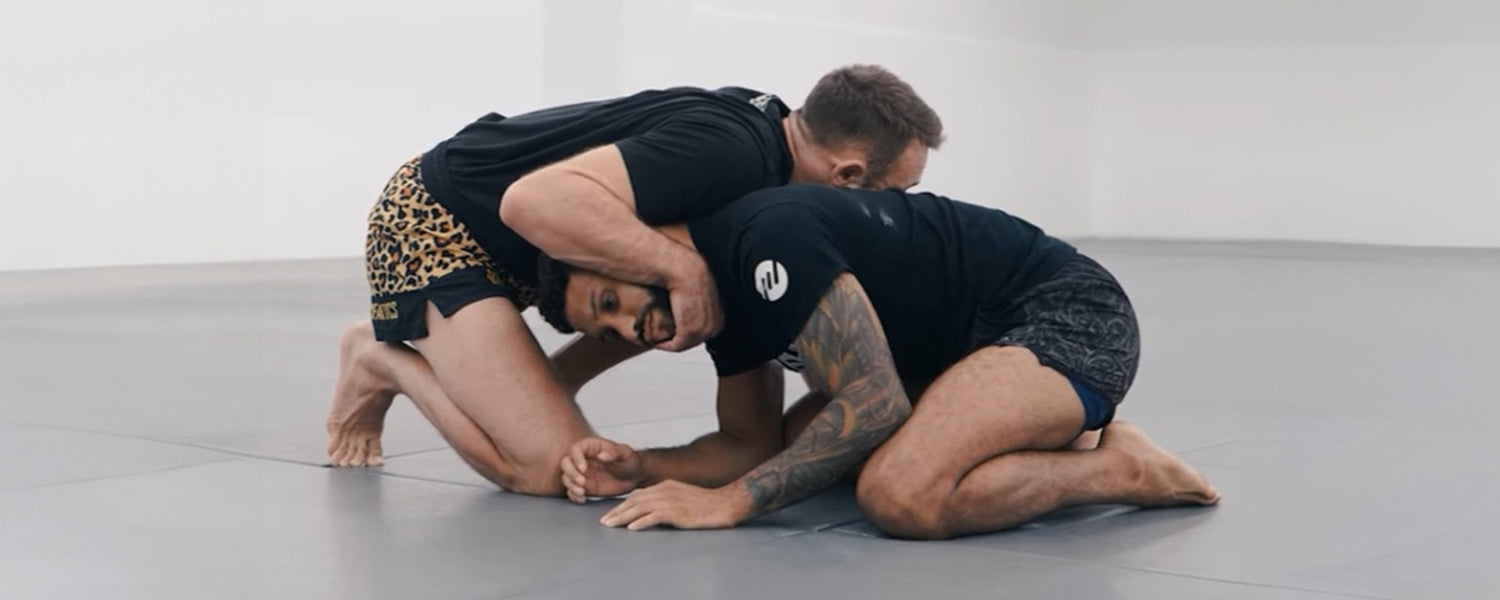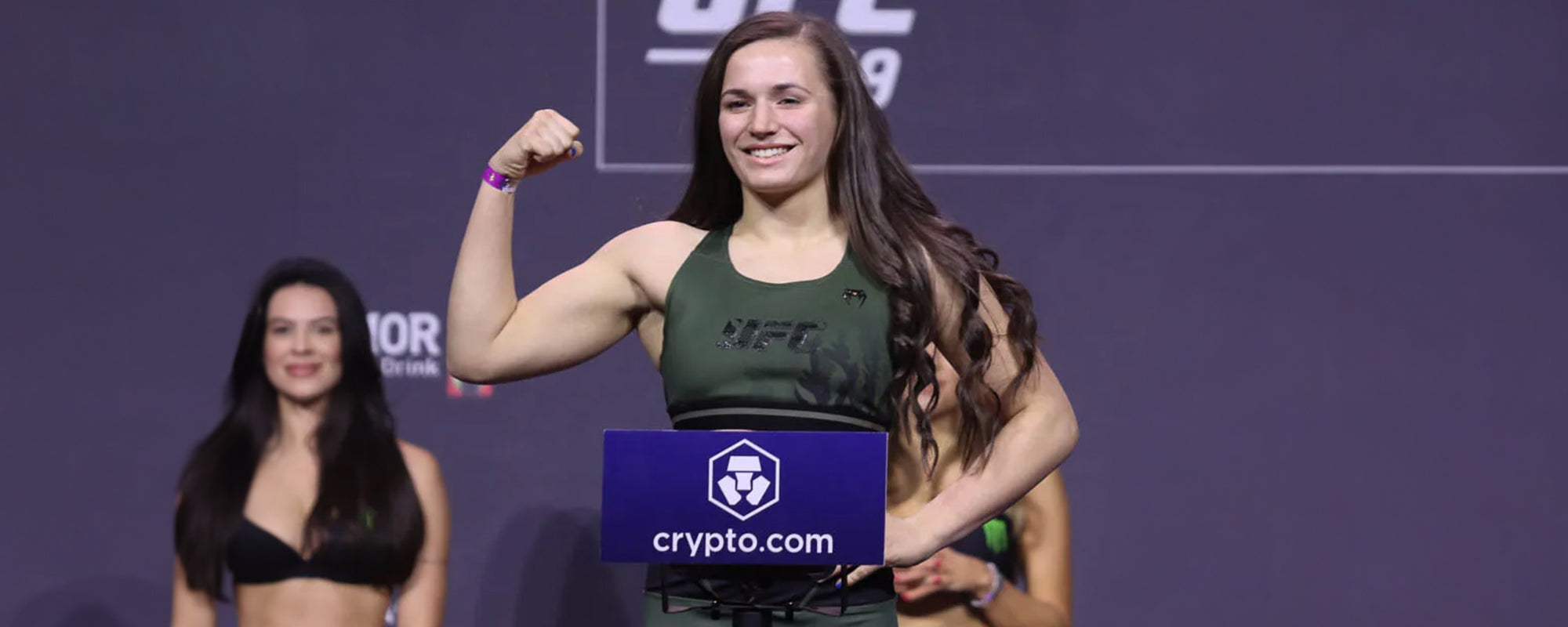The art of Brazilian jiu-jitsu is based on grappling, submission, and takedowns. Fighters use various methods to gain control over their opponents. To achieve a dominant position, the grappler incorporates variations of chokes and joint locks.
Today, millions of people around the globe practice BJJ , and the techniques and methods are being modified with the passage of time. We have seen many modifications in traditional gi and no-gi tournaments. Some fighters use different methods after modifying the old method; in this way, the practitioners introduce new techniques in jiu-jitsu.
In this article, we will unveil a new technique, BJJ Chin Straps. It is the most effective method for gaining proper control over the opponent. Let us find out the mechanism and adequate execution of the chin strap.
Table of content
1. Chin Strap and Brazilian Jiu-jitsu

Chin Strap is a highly effective method of submission in Brazilian jiu-jitsu. The grapplers use the chin strap to control the opponent properly.
The best part of the martial arts of BJJ is that it allows to fighter to move to other submission methods if one technique fails. Taking control of the head is not an easy task, but it can be accomplished by executing the chin strap. Once you have targeted the head properly it means you have successfully controlled the whole body.
2. Mechanism of Chin Strap
The Chin Strap is the most dominant tool in the BJJ arsenal, and it provides many opportunities. Fighters can apply this technique when they are passing the guard. They target the opponent's head by placing it between the hand and the ribs.
The fighter can exert extreme pressure on the neck area and instantly come into the dominant position. That is why it is considered the most effective tool that leads to victory.
The fighter uses the hand placed in front of the opponent. The neck area goes to the back and touches the bicep of a fighter. Concurrently, the pressure is increased by exerting the force of the arm and ribs.
The opponent gets caught in the grip, putting him in an uneasy position. The ribs act like the opposing force, stopping the movement of the head at once. The fighter can use the other hand to restrict the opponent's movement by holding his hand.
In the execution of the chin strap, the fingers are held tight, keeping the head still in place. The additional step of moving the head downward will restrict the opponent's forward movement.
3. Step-by-Step Guide to Chin Strap
The grips and the tactics of the chin strap are extremely important, as they allow the fighter to apply any submission method. The chin strap is usually very helpful for executing the guillotine choke . The most versatile tool of BJJ is also known as the chin strap guillotine.

Let us dive into the detailed step-by-step guide to apply chin straps accurately. The chin strap is a fantastic and versatile tool that can be executed from multiple angles . In this article, we will explore all the ways to apply chin straps one by one.
3.1. Basic Method of Guard
There are many ways to apply the chin strap, and the great place to execute it is from the guard position. The fighter can execute the Chin strap from the open or even from the closed guard.
3.2. Head in Downward Direction
As the opponent is moving his head in a downward direction, the fighter needs to take control by keeping his arms around it.
3.3. The Use of Arm
The next crucial step is to use the arm and wrap it around the neck of the opponent. The face should be headed in a downward direction. The bicep is placed over the back of the head.
3.4. The Placement of Fingers
It is the most significant step; the fighter needs to keep his fingers tight and stiff in place. It will help to restrict the movement of the opponent. The fighters should be held together so there will be no space in between.
3.5. Downward Movement of Head
In this step, the fighter needs to exert pressure on the opponent’s head by putting the pressure in a downward motion. In addition, it will help to break the posture, and the fighter will be in the dominant position.
3.6. Restrict Motion with Other Hand
The fighter will keep one hand over the other under the opponent’s chin. Create the hook by holding the lower part of the hand.
3.7. Place Head on the Mat
The fighter needs to put the force with the hand and take the head of the opponent in the downward direction. Place the head on the mat, leaving no space in between.
3.8. Stop from Rolling
The last step is to put the leg over the back of the opponent, and this will stop them from rolling back in the backward direction. The fighter needs to put a leg that can be moved freely.
4. Chin Strap Execution from Various Positions

4.1. Execution from the Sit-up Position
If the opponent does not move his head downward, the fighter can take control by sitting up.
- It can be applied when both of the fighters are in the sitting position
- The fighter needs to stand on his knees.
- Target the head, and wrap your one arm around the neck.
- Pull down the head and move it in the downward direction.
- Follow the same steps as described above to finish.
4.2. Application from the Bottom Position
- When the fighter is on the mat, and the opponent is in the dominant position.
- Reach the opponent instantly by moving rapidly in the forward direction.
- Execute the chin strap and follow the same steps.
4.3. Half Guard Position and Chin Strap
- As the opponent is in the guard position. Protecting himself by placing the forearm and shin at the front.
- The fighter needs to move in a downward motion, targeting the neck.
- Use the arm at the upper side to easily reach the opponent’s head.
- Wrap and grab the neck of the opponent and secure it by keeping your fingers together.
- As the opponent is crunching in, your instant move will break the opponent's posture.
- As the opponent breaks the posture, use the other hand to pass the guard position.
- Finish the move by placing the hand on the mat.
- Move the opponent's head in an upward motion to tap them out.
4.4. Chin Strap While Escaping
- A chin strap is applied when the fighter is in the side control position.
- If the fellow fighter is escaping with the hip movement, target the opponent from side control.
- Grab the chin after approaching the opponent from the mount position.
- Keeps your fighter secure and tight in place.
- As the opponent's posture breaks with the force exerted on him, approach his knee.
- Use the hand, and move the opponent’s knee away from the direction.
- Restrict the range of motion by moving his head in a downward direction.
- Finish the guillotine choke with the chin strap.
4.5. Chin Strap in the Standing Position
- The versatile move of the chin strap can be applied when the fighters are in the standing position.
- Keep one hand in the defensive position while the other targets the hand.
- Keep the defensive hand to protect the legs from being captured by the opponent.
- As the opponent comes near you can use the posting hand to target the neck of the opponent.
- Drag the head near you and hold the head with the defensive hand.
- Apply the chin strap, and hold the motion of the head with the side of the ribs.
5. Benefits of Chin Strap

The chin strap is massively useful, providing you with the maximum possibilities. Find out some of the benefits of chin strap:
- Allows you to take control over the opponent.
- As you have taken control over the head, you have control over the whole body.
- It is the best way to apply the guillotine choke.
- The Chin Strap can be applied from multiple angles, including side control, half guard, mount, and even from the standing position.
- Chin straps allow you to do multiple transitions.
- It can be applied from the defensive and even offensive positions.
- You control the opponent in the turtle position .
6. Techniques and Drills
The Jiu Jitsu Chin Strap is a secret weapon that can be applied from multiple positions. It is one of the most useful grips in Brazilian jiu-jitsu and even wrestling. You can practice the method by drilling individually or with an opponent.
6.1. Solo Drills
The practitioner needs to practice a bridging technique that will help the fighter escape from the opponent's offense.
Practice the technical stand drills ; they will help you apply the chin strap even from the bottom position.
Do the solo training of rolling by moving forward and backward motion.
6.2. Partner Drills
The fighter can practice the following drills with the opponent:
When your partner is in the guard position, practice passing the guard to reach the target.
Improve your movement by using sparring drills. This will help you get the proper control over your opponent. In addition, you can have a better grip on a chin strap.
You need to train yourself in a sweep ; it will allow you to attain the specific position to apply the chin strap.
7. Final Words
Chin Strap is a versatile technique that gives maximum opportunities for the BJJ grappler. If the fighter is the master of the chin strap, then they can apply it from any position. The chin strap works on the technique of the arm grip, correct placement of the fingers, and applying the pressure in the downward direction.
The secret weapon of the chin strap can be applied from the bottom position, half guard, and even from the standing position. In addition, the chin strap leads to a transition, and the fighter can easily apply any submission method. It is also known as the chin strap guillotine because the fighter can easily transition to guillotine choke .









Leave a comment
This site is protected by hCaptcha and the hCaptcha Privacy Policy and Terms of Service apply.